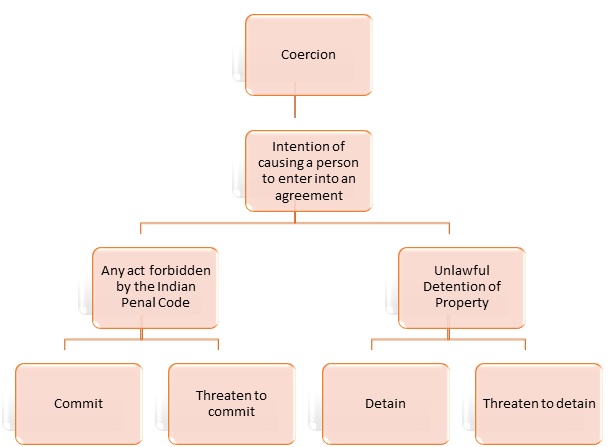Elements of a Crime: Part I
In the previous article ‘What is Crime?’ we discussed the
various definitions and characteristics of crime. But what is still unanswered
is what would constitute a crime?
This article discusses the elements of a crime at length. Let’s get started.
ELEMENTS OF CRIME
There are majorly four elements of a crime:
1. Human Being (Male/Female/Juristic Person)
2. Mens Rea
3. Actus Rea
4. Injury to the society or person
Let us look into each one of them in more detail.
1. HUMAN
BEING
To commit any offence an offender is necessary, the first element to
constitute crime requires that the wrongful act must be committed by a human
being. Human being here refers to any male, female or juristic person. The term
‘person’ in general includes juristic as well as an artificial person but the only type of person capable to commit a crime is a
juristic person. A juristic person is a person recognized by law. Section 10
of IPC defines the terms ‘male’ and ‘female’ while Section 11 defines
the term ‘person’.
S. 10 “Man” or
“Woman” - The word “man” denotes a male human being of any age; the word “woman”
denotes a female human being of any age.
S. 11 “Person” - The word “person” includes any Company or Association or body of
persons, whether incorporated or not.
2. MENS REA
“Actus non facit reum nisi mens sit rea[1] “
The criminal liability of any person is decided in accordance to their
violation of criminal law. However, this is not an absolute rule as it is
limited by a Latin maxim, “Actus non facit reum, nisi mens sit rea”.
The meaning of the legal maxim in simpler terms when broken down into
words is-
Actus – an
act or an action i.e. something done which produces effect/impact
Non – not
Facit – makes
Reum – prosecution/worthy of prosecution/guilty of penalty/liable
Nisi – unless
Mens – the
mind
Sit – is
Rea – culprit/guilty
An act alone in itself does not make a man guilty unless the mind is guilty
i.e. the intent, as well as the act, must both occur/concur to constitute a
crime.[2] This rule signifies that mere performance of
any prohibited act without any malafide/criminal/guilty intention would not
constitute a crime. Similarly, mere mens rea not followed by an action
prohibited under law, shall not constitute a crime.
Thus, in reference to this rule, there are other two significant
components of every crime, a mental element and a physical element, generally
referred to as mens rea and actus reus respectively.
Mens Rea
“Whatever is in the mind
translates into action
and
action speaks for what is in our mind”
Mens rea is generally considered as a technical term that means a kind
of blameworthy/guilty mental condition, which can be constituted by either
intention or knowledge or otherwise and its absence can negate the contention
of a crime.[3] For example, causing injury in pursuance of
self-defence is not a crime, but the moment injury is caused with the intent to
take revenge, the act becomes criminal. Similarly, shooting in air is no crime,
but shooting a man with the intent to kill him is a crime.
In the early days of the judicial system, the courts decided the criminal
liability only on the mere basis of ethical norms of the society.[4] Later, two tests were developed that were used to
determine mens rea. The first was whether the act committed was a voluntary or
an intentional act done by the accused while the second was whether the accused
had the knowledge about the consequences of the act before its commission.[5] We can conclude that Mens rea consists of the
two elements that are –
1.
intention
to commit the act
2.
knowledge
of consequences of the prohibited act
For instance, if Dashrath, while hunting a tiger, shoots Shravan Kumar, who was drinking
water from a lake hid behind the bushes. Dashrath is not liable for injuring Shravan Kumar
because the act was a clear accident and Dashrath could not foresee his bullet that hit Shravan
Kumar.
Likewise, if K, a driver, is coerced by a gang of robbers to break
into her master’s house and commit robbery, she is not liable for committing
the offence of robbery and breaking the doors. She had to concede to the
demands of the robbers under a threat of instant death, and so the act of
breaking the doors and committing robbery was not a voluntary act and therefore
she must not be held liable.
Indian Penal Code and Mens Rea
The Indian Penal Code has incorporated the concept of malafide
intention in its provisions in two primary ways:
(i)
The
doctrine of mens rea though have not been literally used in the IPC, it
expressly mandates the requisite of guilty mind/criminal intention/malafide
intention in the definition of an offence by using such words as “intentionally,
knowingly, voluntarily, negligently, recklessly, fraudulently, dishonestly,
etc. It can be said that every offence under IPC, 1860 “virtually imports the
idea of mens rea”[6].
(ii)
through
the concept of ‘General Exceptions,’ enlisted under chapter IV of the Code i.e.
from S. 76-106 that makes the offence a non-offence if there is no
existence of mens rea.
S. 81
“Act likely to cause harm, but done without criminal intent, and to
prevent other harm.— Nothing is an offence merely by reason of its being done
with the knowledge that it is likely to cause harm, if it be done without any
criminal intention to cause harm, and in good faith for the purpose of
preventing or avoiding other harm to person or property.
Explanation—It is a question of fact in such a case whether
the harm to be prevented or avoided was of such a nature and so imminent as to
justify or excuse the risk of doing the act with the knowledge that it was
likely to cause harm.”[7]
Though the legislature has omitted to expressly include mens rea as an
important ingredient for the offences under Chapter IV of the IPC, the
presumption is that such omission is deliberate and the principle of mens rea
would therefore not apply.[8]
It is to be noted that mens rea constitutes an essential ingredient in
every offence except in three cases: -
(1) cases not criminal in any real sense but which in the public
interest are prohibited under a penalty;
(2) public nuisance; and
(3) cases criminal in form but which are really only a summary mode
of enforcing a civil right.[9]
For example, in cases like obscenity,[10] sedition, abduction, waging a war against
government, kidnapping, etc. there is no mens rea that is required to impose
criminal liability on the offender.[11]
There have been various cases where judiciary has decided the criminal
liability on the basis of mens rea where under IPC it has not been mentioned.[12] Therefore, it is established that under no
circumstances a person can be waived from the liability of his acts if he
commits the act with malafide intention but if he causes injury without any
criminal intention then his liability is subject to the provisions laid under
IPC as stated above provided the act committed involved good faith to avoid
greater harm.
It is also stated when the act done is criminal in its form but does
not involve mens rea but in fact was done in good faith or for the protection
of larger group, the offence is not punishable.
For example:
1.
A
hit a man Y with a wooden bat to help Y get rid of the electric shock he is
facing. In course of helping him, Y faced various injury due to the wooden bat.
Later he died due to injury on head caused by the wooden bat. A is not liable.
Since he did everything in good faith and to protect and help Y.
2.
To
avoid the iceberg and to protect its own 50 passengers and Boat B’s 30
passengers, Boat A decides to turn towards Boat C which has two passengers.
While taking turn, the Boat C was caught and the two passengers died. The
sailor is not liable because his actions were to protect the larger group and
to minimize the casualties. (Utilitarian policy).
Different Mens Rea for Different Actions
Though mens rea is a requisite for the commission of crime, there is
no single state of mind that must be present during all the crimes. An evil or
malafide intent for one kind of offence may not be similar for the other kind
of offence. For example, in the case of murder, it is the intent to cause death
while in the case of sedition it is the intent to disrespect the country or
destroy the country. Likewise, in the case of rape it is the intention to
forcefully perform sexual intercourse while in the case of theft it is the
intention to steal.[13]
Mens Rea and related terms
To appreciate the meaning of mens rea, it is significant to understand
and have a clear conception of the words including motive, knowledge and
intention that are usually used to describe the different possible mental
attitudes that constitutes a particular crime. So, let’s have a look in detail-
A. Motive
Motive is something that prompts a man to form an intention.[14] Motive is not considered a basis for criminal
liability. Criminal law takes into account only a man’s intention or knowledge
and not his motive.
For example, A commits theft in order to provide food for his starving
children, no matter how good is the motive of the person, his act would not be
rendered as lawful but would surely constitute the offence of theft. Likewise,
an evil motive will not be unlawful if the act committed is lawful. For
example, an executioner may be extremely happy because of spite against him, to
kill the convict to death but the act committed is lawful and not a crime.
Thus, motive is not a necessary condition to examine the liability of the
accused. However, the analysis of the evidence of motive is relevant in the
court of law, since it provides clarity on the question of intention that is an
important element to constitute a crime. Since motive does not calls for
criminal liability, the prosecution is not duty bound to substantiate on the
motive of a crime.[15] Motive has been recognised under Section 8 of Indian Evidence act, 1872.[16]
B. Knowledge
Knowledge is when any person is aware about the consequences of the
act he is going to commit.[17] Knowledge is of two kinds:
a.
actual
knowledge
b.
constructive
knowledge
Actual knowledge is concluded from the actions of the person. On the
other hand, the constructive knowledge is when a person deliberately tries to
make inquiries or tries to intentionally omit the caution which a prudent man
would not. Constructive knowledge is presumed by the court on account of
unreasonable behaviour of the offender. A man may be aware about the
consequences of the act but he may not intend to commit them.
For instance, if a person Y is attacked by a Lion and he calls out B
to start a fire in the jungle in order to protect himself knowing that this
might cause harm to himself. B knowing the consequences of the fire starts the
fire in response of A’s request and causes death of A. B is not liable. [18]
Similarly, in cases of a medical operation, a patient gives his
consent for a dangerous operation which has a risk of life, and if during
operation the patient dies due to the same risk, the doctor would not be held
liable.
It is important to note that in some cases intention can be presumed
by knowledge.[19] For example, if A starts firing bullet in a
crowed place with a knowledge of the consequences of his act, claiming that he
did not intend to commit murder would not be an argument appreciated in the
court of law.
C. Intention
Intention is the desire or purpose to bring about the envisaged
result. For instance, if a man leaves his child on the busy highway it is
obvious that he wanted to kill his child. Similarly, if a person throws himself
from a building of 10 floors and dies, it is obvious he knew the consequences
of his act and committed suicide (although it is not an offence anymore). In
all these cases, the man is intended to commit a crime.
Intention is the execution to achieve the motive. For instance, a man’s
motive is to feed his starving children for which he forms an intention to
steal the food.
Precedents on Mens Rea
The Supreme Court of India, on various occasions, has iterated that
unless a statute clearly describes the non-requirement of mens rea as a
necessary element of prediction of crime, no person shall be held liable for
any act or omission if done without any criminal intent.
In State of Gujarat v DP Pandey,[20] the Supreme Court has stated this rule of
interpreting the penal statutes in the following words:
“The broad, principles accepted by courts in this
country as well as in England are: Where an offence is created by a statute,
however comprehensive and unqualified the language of the statute, it is
usually understood as silently requiring that the element of mens rea should be
imported into the definition of the crimes, unless a contrary intention is
expressed or implied. In other words, the plain words of the statute are read
subject to a presumption, which may be rebutted, that the general rule of law
that no Crime can be committed unless there is mens rea, has not been ousted by
the particular enactment.”
The Supreme Court in another judgment has held that no external conduct, howsoever its consequences be, would be generally punished unless the prohibited action involved wrongful intent or mens rea.[21]
To read the Elements of a Crime: Part II, click here.
[1] The earliest traces of this maxim are found in St
Augustine’s Sermon No 118.02, where it was recorded as “ream linguam non facit,
nisi mens sit rea” and was cited in Pollock and Maitland, II, 476n.
[2] Fowler v Padget (1798) 7 Term Rep 509
[3] “Annual Survey of the Indian Law”, 1963, Indian
Law Institute, p 499; Stephen James, History of Criminal Law of England, vol
II, 1883; “Mental Element”, Harvard Law Review, no 74, 1960-61; Smith and
Hogan, Criminal Law, 5th Edn, 1983, pp 47-48; KM Perkins, “A Rationale of Mens
Rea”, Harvard Law Review, no 52, 1938-39, p 905; Essays on the Indian Penal
Code, Indian Law Institute, 1962, pp 56-62.
[4] Russell on Crime, vol I, 12th Edn., pp 17-22.
[5] Jerome Hali, General Principles of Criminal Law, 2nd Edn, 1960, pp
70-77; Deylin, “Statutory Offence”, (1938) 4 JSPTL 213.
[6] K D Gaur, Criminal Law-Cases and Materials, 9th ed.
[7] S. 81, Indian Penal Code, 1860.
[8] MC Setalvad, The Common Law in India; Mayne, Criminal Law in India,
4th Edn ; Gour Hari Singh, The Penal Law of India, vol 1, 11th Edn; Ratanlal
and Dhirajlal, Law of Crimes, 23rd Edn, 1991;
“Diluting the Doctrine of Strict Liability”, 1970
Ann Sur IL, pp 477-80.
[9] Ratanlal & Dhirajlal: Indian Penal Code (PB), 36th ed.
[10] Ranjit D Udeshi v State of Maharashtra, AIR 1965 SC 881.
[11] See the Indian Penal Code, 1860, sections 121, 124A, 259, 363, 232.
[12] Srinivas Mall v Emperor, 1947 AIR PC 135; Ravula Hariprasad Rao v
State of Madras, AIR 1951 SC 204; Lim Chin Aik v Reg, [1963] AC 160.
[13] Sayre, “Mens Rea”, Harvard Law Review, no 45, 1932, p 974; SKKV Kara
v State of Kerala, 1970 AIR Ker 98 : 1970 Cr LJ 688.
[14] Basdev v State of Pepsu, 1956 AIR 488.
[15] K D Gaur, Criminal Law-Cases and Materials, 9th ed.
[16] Section 8 of Indian Evidence Act, 1872 states that – Any fact is
relevant which shows or constitutes a motive or preparation for any fact in
issue or relevant fact.
[17] RC Nigam, Law of Crimes in India, vol 1, 1965, pp 77-79.
[18] Draft Penal Code, Appendix Note B, p 108.
[19] AIR 1956 SC 488.
[20] AIR 1971 SC 866



Comments
Post a Comment